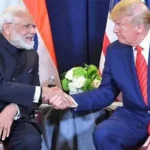By K Raveendran
The great Indian wedding has always been a spectacle of excess, but when it comes to the nuptials of billionaires, it takes on the proportions of an Olympic event—judged on the parameters of opulence, star power, and the number of private jets idling at the nearest tarmac.
And so, India found itself riveted by two grand occasions: the wedding of Anant Ambani, scion of the house of Reliance, and the wedding of Jeet Adani, heir to the empire built by Gautam Adani. Both promised grandeur, both delivered magnificence, yet there was an undeniable difference in the philosophy behind their extravagance.
On one hand, we had Mukesh Ambani, India’s most celebrated industrialist, deploying the bottomless wealth inherited from his father, Dhirubhai Ambani. While Anant’s wedding unfolded the kind of excess that makes Versailles look like a modest summer home, one couldn’t help but wonder—was this really a display of financial prowess or simply a dutiful disbursement of a fortune handed down? To be fair, if your patriarch had meticulously crafted a business empire, wouldn’t you honour his legacy by renting out entire Mediterranean coastlines for pre-wedding soirees?
On the other hand, Gautam Adani—the self-made titan of infrastructure, energy, and everything in between—could have spent even more without the weight of intergenerational scrutiny. Here was a man who had built his fortune with his own two hands, of course with the occasional governmental nudge. If the Adanis had chosen to outspend the Ambanis, it would have been wealth rightfully flexed, not just generational privilege in gilded wrapping.
Yet, for all the talk of lavish spending, Adani found a way to redefine extravagance in a way that even the most ardent socialist would struggle to critique: pledging a cool Rs 10,000 crore for social service. That’s not just a line item in the CSR ledger; that’s an amount greater than or equal to what the Finance Commission allocates to entire Indian states. Himachal Pradesh, Goa, and several northeastern states would collectively nod in approval—what is a five-day wedding if, in parallel, an entire region gets an infrastructural facelift? The Ambani wedding, for all its grandeur, had no such budgetary footnote—unless, of course, one considers the indirect GDP boost provided by global artists, luxury hotel chains, and the makers of gold-threaded sherwanis.
In a fascinating twist, the Adani wedding coincided with the budget announcement of Kerala. Even more striking was the fact that the Rs 10,000 crore pledged by Gautam Adani for infrastructure development in healthcare, education, and skill development is roughly equivalent to Kerala’s allocation for the health sector. A state often lauded for its stellar healthcare achievements—consistently ranking number one in the country—could, in theory, run an entire year’s health budget with the same funds earmarked for social service by a single industrialist. The irony was not lost on observers who juxtaposed Kerala’s meticulous governance with the free-flowing expenditures of India’s corporate elite.
And then, there was the kicker: the Ambani wedding was estimated to have cost Rs 5,000 crore. With the Rs 10,000 crore he pledged to charity, Gautam Adani could have easily thrown two such weddings, doubling the spectacle while still retaining a sense of noble purpose. It was a subtle but staggering contrast—one man spending for the continuation of legacy, another allocating funds that could reshape the social fabric of some people.
Ultimately, both weddings were triumphs of financial muscle, but their legacies will be judged differently. The Ambanis reminded us of the grand continuation of a dynasty, while the Adanis, even in their celebrations, underscored the virtue of wealth earned versus wealth received.
One can only hope that the next generation of these two great industrial families will find equally creative ways to one-up each other—perhaps in philanthropy, or, if that fails, in the sheer number of elephants deployed for the baarat. Because in India, if you must be excessive, at least do it with a little purpose. (IPA Service)




 PM Narendra Modi’s Talks With Donald Trump On February 13 Are Crucial
PM Narendra Modi’s Talks With Donald Trump On February 13 Are Crucial 